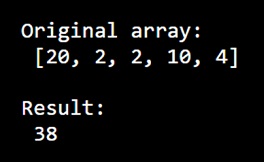Home »
Python »
Python Programs
How to sum by year using NumPy?
Learn, how to sum by year using NumPy?
By Pranit Sharma Last updated : October 08, 2023
NumPy is an abbreviated form of Numerical Python. It is used for different types of scientific operations in python. Numpy is a vast library in python which is used for almost every kind of scientific or mathematical operation. It is itself an array which is a collection of various methods and functions for processing the arrays.
Problem statement
Suppose we are given a NumPy array representing the data of some transactions of some years.
Sum by year using NumPy
We need to aggregate the data of this array by the year values. For this purpose, we will use the numpy.sum() method, it returns the sum of array elements over a given axis.
The syntax of numpy.sum() method is:
numpy.sum(
a,
axis=None,
dtype=None,
out=None,
keepdims=<no value>,
initial=<no value>,
where=<no value>
)
Some of the important parameters of numpy.sum() method are:
- arr : input array.
- axis : the axis along which we want to calculate the sum value. Otherwise, it will consider arr to be flattened(works on all the axis). axis = 0 means along the column and axis = 1 means working along the row.
- out : Different array in which we want to place the result. The array must have the same dimensions as the expected output. The default is None.
- initial : [scalar, optional] Starting value of the sum.
- return : Sum of the array elements (a scalar value if the axis is none) or array with sum values along the specified axis.
Let us understand with the help of an example,
Python program to sum by year using NumPy
# Import numpy
import numpy as np
# Creating a numpy array
arr = [20, 2, 2, 10, 4]
# Display Original array
print("Original array:\n",arr,"\n")
# Using sum method
res = np.sum(arr)
# Display result
print("Result:\n",res)
Output
The output of the above program is:

Python NumPy Programs »
Advertisement
Advertisement